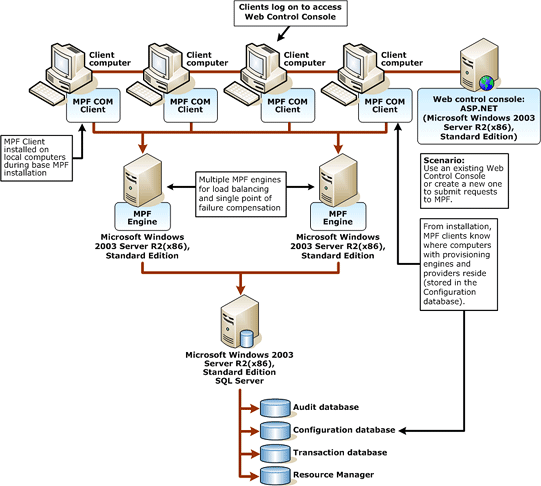The new installation deployment scenario applies to environments that have no existing provisioning system. Before you deploy Microsoft Provisioning System (MPS) in a new environment, you should review the preinstallation and planning tasks described in Hosted Services Planning Review and deploy an MPS test configuration in a lab or other test environment. The deployment of a test configuration will enable you to prototype your provisioning environment. After testing is completed, see Build Service Provisioning to deploy MPS in your operational production environment.
If you are new to MPS, you might consider deploying MPS in the Minimal Service Provisioning Environment. Otherwise, if you are an experienced MPS user, you can deploy MPS in the Fault Tolerant Service Provisioning Environment. In the latter case, you might also consider any extended provisioning functionality you might want in your system. For background information and guidelines, see Evaluate Provisioning Implementations.
After you review this information, you might decide that you also want to develop custom providers or namespaces. To facilitate the development of these components and other custom solutions, please see Microsoft Provisioning System SDK. You should also strongly consider reviewing other planning information, which is included in Microsoft Provisioning System Security and Fault Tolerant Service Provisioning Environment.
The following figure illustrates a sample MPS configuration with minimal fault tolerance and load balancing that you might utilize for the new installation deployment scenario. This configuration is similar to what you deploy in the minimal service provisioning configuration (minus the platform services), with the exception of including an additional Provisioning Engine server for single point of failure compensation. This configuration also shows the MPF COM Client installed on the client computers, although the ASP.NET Web Service on PROV01 also has the MPF COM Client installed.
